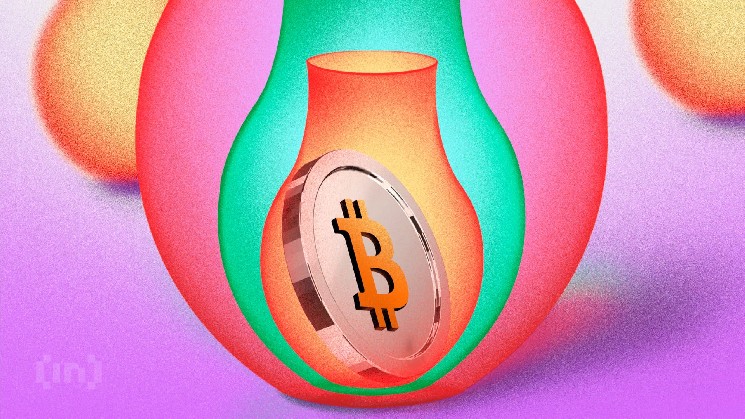By AltSeason CoPilot
Compiled by: Vernacular Blockchain

I discovered a data point that made me re-examine everything I thought I knew about technology adoption—and it was hiding in plain sight.
Cryptocurrency is not only growing rapidly, it is growing faster than the internet, and we are approaching a tipping point that could reshape global wealth distribution within the next 18 months.
Speed that breaks all the rules
Here’s the key data point that changed my mind: Cryptocurrency reached 300 million users in just 12 years. By comparison, it took the internet 15 years and mobile phones 21 years.
But that's not the most shocking part. What's even more shocking is its acceleration .
In the 1990s, the annual growth rate of internet users was 76%, while since 2015, the annual growth rate of cryptocurrency wallets has reached a staggering 137%.
This isn't just a faster pace of adoption—it's a pace of adoption that breaks historical patterns.
By the end of 2024, cryptocurrency users have reached 659 million. The forecast for 2030? 4 billion users.
Think about what this means: in the next five years, cryptocurrencies could add more users than the entire internet did in its first decade.
This is not incremental change – this is systemic replacement at a fast pace.
Corporate awakening changes everything
While everyone was still debating whether cryptocurrencies were “real,” something happened that most people overlooked. Corporate America quietly crossed a line of no return.
Publicly traded companies now hold over 1 million Bitcoins , nearly 5% of the total supply. This isn't speculative money. This is corporate reserves. This is "we believe in Bitcoin more than the dollar" money.
But what really deserves your attention is:
These are not risk-taking tech companies, but traditional, conservative businesses making strategic decisions about the future of money.
When MicroStrategy started buying Bitcoin, people called it a publicity stunt. Now, the move looks like the smartest financial decision it made in a decade.
This pattern is accelerating.
Every quarter, more companies announce Bitcoin reserve strategies. Every quarter, the definition of “normal” is reshaped.
Three forces creating the perfect storm
That tipping point I mentioned? It's about more than just user growth. Three major forces are converging simultaneously , and their combination could trigger unprecedented events.
Force 1: The Stablecoin Revolution
What you see: a digital dollar that simplifies payments.
What actually happened : A radical restructuring of cross-border finance. When Apple or Amazon launch their own stablecoins—and they will—traditional banking will become optional overnight.
Imagine sending money internationally as easy as sending an email. No banks, no fees, no delays. This isn't a futuristic scenario— stablecoins are already making it possible, and we're only just getting started.
Force 2: Influx of institutional funds
What you see: Bitcoin ETFs and corporate reserve adoption.
What actually happened: The largest pool of capital in human history began flowing into cryptocurrencies. Pension funds, sovereign wealth funds, insurance companies— trillions of dollars that had never touched cryptocurrencies before were about to enter the market.
The math is simple: when institutional money flows into fixed-supply assets, prices don’t just go up— they explode.
Force 3: Regulatory Flip
What everyone sees: Crypto-friendly politicians win elections.
What’s actually happening: The regulatory risks that kept institutional money out are fading. The US is shifting to cryptocurrency leadership. Asia is catching up. Even Europe is loosening its restrictions.
When regulatory uncertainty disappears, institutional adoption doesn’t just accelerate—it becomes inevitable.
The scenario that keeps traditional banks awake at night
I’ve been modeling what it would look like if these three forces converged, and the results range from “transformative” to “catastrophic”—depending on which side of the transition you’re on.
Scenario 1: Gradual Takeover
Premise: Cryptocurrency adoption continues to grow at its current pace. Businesses continue to add Bitcoin to their reserves. Stablecoins gradually replace traditional payment rails.
The result: traditional banking becomes a luxury service for those who prefer complexity. Most people interact with money through crypto systems without even realizing it.
Timeline: 3-5 years to achieve majority adoption.
Scenario 2: Acceleration Event
Premise: A major economic shock (currency crisis, banking system stress, geopolitical events) causes a rapid flight of funds into crypto assets.
The result: The incremental adoption timeline is compressed to 12-18 months. The traditional financial system has no time to adapt. The wealth transfer occurs so rapidly that it triggers social and political instability.
Timeline: 1-2 years to achieve majority adoption.
Scenario 3: The Perfect Storm
Premise: Apple launches a stablecoin, the US builds up a Bitcoin reserve, and a major currency crisis occurs.
The result: Cryptocurrency users jumped from 659 million to 4 billion in less than two years. Traditional financial institutions faced an existential crisis. The concept of "alternative finance" became obsolete as cryptocurrencies went mainstream.
Timeline: 12-18 months to achieve majority adoption.
Warning signs everyone ignored
Here are some reasons why I believe we are closer to Scenario 3 than anyone thinks:
The infrastructure has been built.
- Payment networks already exist. Visa and Mastercard already process cryptocurrency transactions.
- Custody solutions already exist. Major banks already offer cryptocurrency services.
- The regulatory framework already exists. Major markets are developing clear rules.
All we're missing is the triggering event.
And these events are happening more and more frequently. Currency instability in multiple countries, stress in the banking system, corporate reserve crises – each event is driving more people to turn to cryptocurrency solutions.
The mathematics that scares traditional finance
Let me show you the numbers that completely changed my perspective:
Bitcoin's adoption growth rate over the past decade is 18,640%. That's not a typo. It's 18,640%.
If this pace continues for another two years, Bitcoin will be as common as email. If it continues for five years, Bitcoin will be more ubiquitous than the internet itself.
Traditional banks optimize for a world where they serve as intermediaries for all financial transactions. Cryptocurrencies are creating a world where intermediaries are optional .
The question is not whether traditional finance can adapt, but whether they can adapt quickly enough.
The critical point that changes everything
Remember the 4 billion users predicted for 2030? This number is significant for several reasons:
Four billion users represents the critical mass needed for cryptocurrency to move from “alternative” to “default.” When nearly half the world’s population uses cryptocurrency regularly, governments can’t ban it, banks can’t ignore it, and businesses can’t avoid it.
We are not just witnessing the adoption of a new technology. We are witnessing the replacement of the global financial system in real time.
Based on the current adoption curve, we may reach this tipping point three years earlier than expected.
A choice everyone must make
Think back to what I said about wealth transfer.
It's not theoretical—it's mathematical.
When 4 billion people use crypto, the value has to go somewhere.
It will flow from traditional financial intermediaries to networks that provide services that people actually use.
If you hold traditional assets as the transition accelerates, you are fighting the fastest adoption curve in human history.
If you hold crypto assets, you are betting on a technology that has proven to grow faster than the internet.
The data suggests that one option is significantly safer than the other.
Cryptocurrency adoption isn't just outpacing the internet—it's poised to become the dominant global financial system within this decade. The combination of corporate reserve adoption, stablecoin infrastructure, and regulatory clarity is creating the conditions for the fastest wealth transfer in human history. The only question is whether traditional financial institutions can adapt quickly enough to survive this transformation.
Link to this article: https://www.hellobtc.com/kp/du/09/6045.html
Source: https://digitalcurrencytraders.com/the-looming-cryptocurrency-user-tipping-point-3b4eae79eb1a






